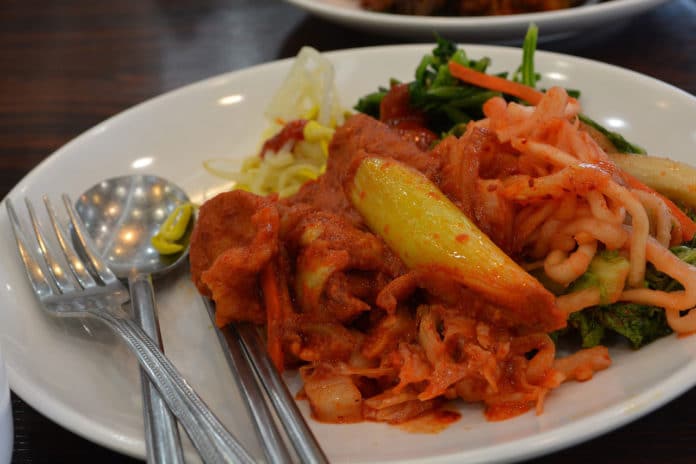Kimchi is a collective term for vegetable dishes that have been salted, seasoned, and fermented. The raw ingredients for kimchi have been recognized as one of the important environmental factors influencing the fermentation of kimchi.
Lactic acid bacteria involved in the fermentation of kimchi. Although, the origin source of lactic acid bacteria involved in the fermentation of kimchi remains unclear.
Now, the World Institute of Kimchi (hereinafter “WiKim”) (Acting Director Dr. Choi, Hak-Jong) announced that it had identified the origin source of lactic acid bacteria involved in the fermentation of kimchi. It has also determined the characteristics of the fermentation process, depending on the strains of lactic acid bacteria.
Lactic acid bacteria are derived from raw ingredients, such as kimchi cabbage, garlic, ginger, and red pepper. It produces various metabolites during fermentation in response to the type of ingredients and storage temperature, and the metabolites determine the flavor and quality of kimchi.
WiKim’s Microbiology and Functionality Research Group led by Dr. Roh, Seong Woon, analyzed the origin source of lactic acid bacteria through multi-omics analysis after selectively sterilizing four ingredients for kimchi, namely kimchi cabbage, garlic, ginger, and red pepper.
Thee research group found that the fermentation was carried out by lactic acid bacteria indigenous to kimchi cabbage and garlic and not by microorganisms derived from ginger and red pepper, among the raw materials for kimchi.
Kimchi fermented by kimchi cabbage-derived microorganisms showed that the strains of in the genus Leuconostoc, Weissella, and Lactobacillus formed dominant communities. On the other hand, fermations by microorganisms from garlic, the strains of in the Leuconostoc and Weissella, were dominant. These lactic acid bacteria were also confirmed to produce metabolites, such as mannitol and lactic acid.
What’s more, the team successfully isolated three major fermentative microbes involved in kimchi fermentation: Leuconostoc gelidum, Weissella koreensis, and Lactobacillus sakei.
Meanwhile, kimchi was fermented differently depending on the species of lactic acid bacteria aforementioned by introducing them into sterilized kimchi.
The results of this study are expected to be utilized as scientific data for the production of standardized kimchi.
WiKim’s Acting Director, Dr. Choi, Hak-Jong, remarked, “We’ve successfully figured out scientific grounds for the fermentation of kimchi by tracing the origin source of lactic acid bacteria involved in the fermentation. This will surely allow us to strengthen the status of South Korea as the origin of kimchi.”
Journal Reference:
- Microbial niches in raw ingredients determine microbial community assembly during kimchi fermentation. DOI:10.1016/j.foodchem.2020.126481
